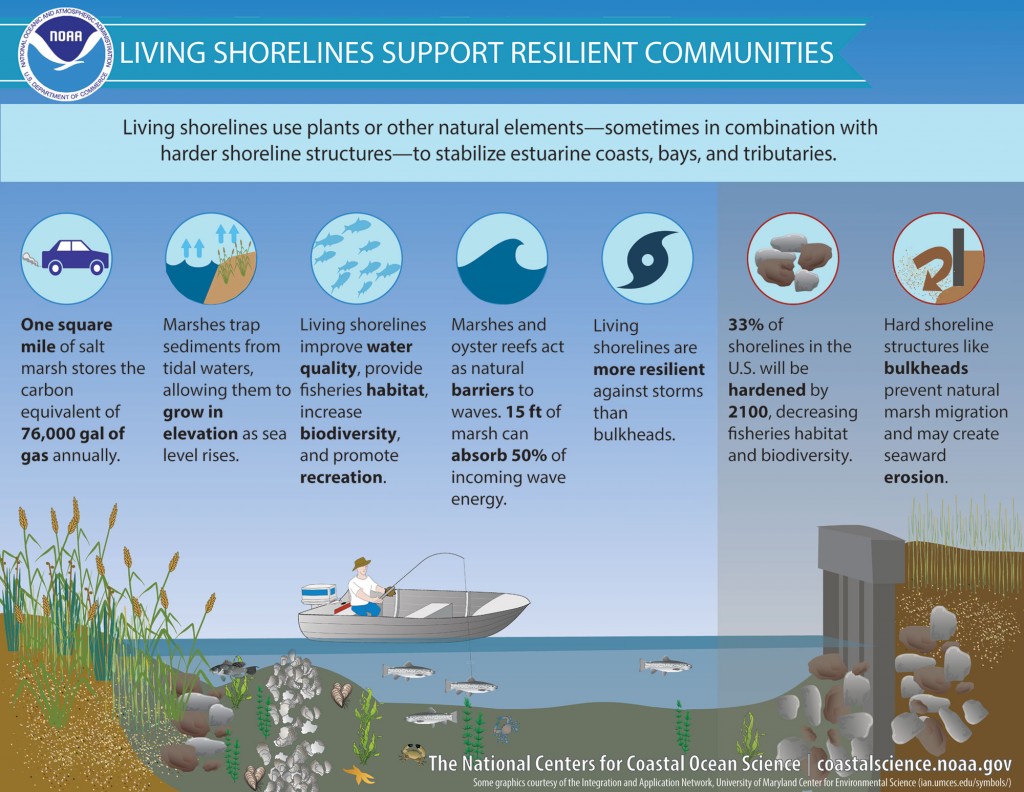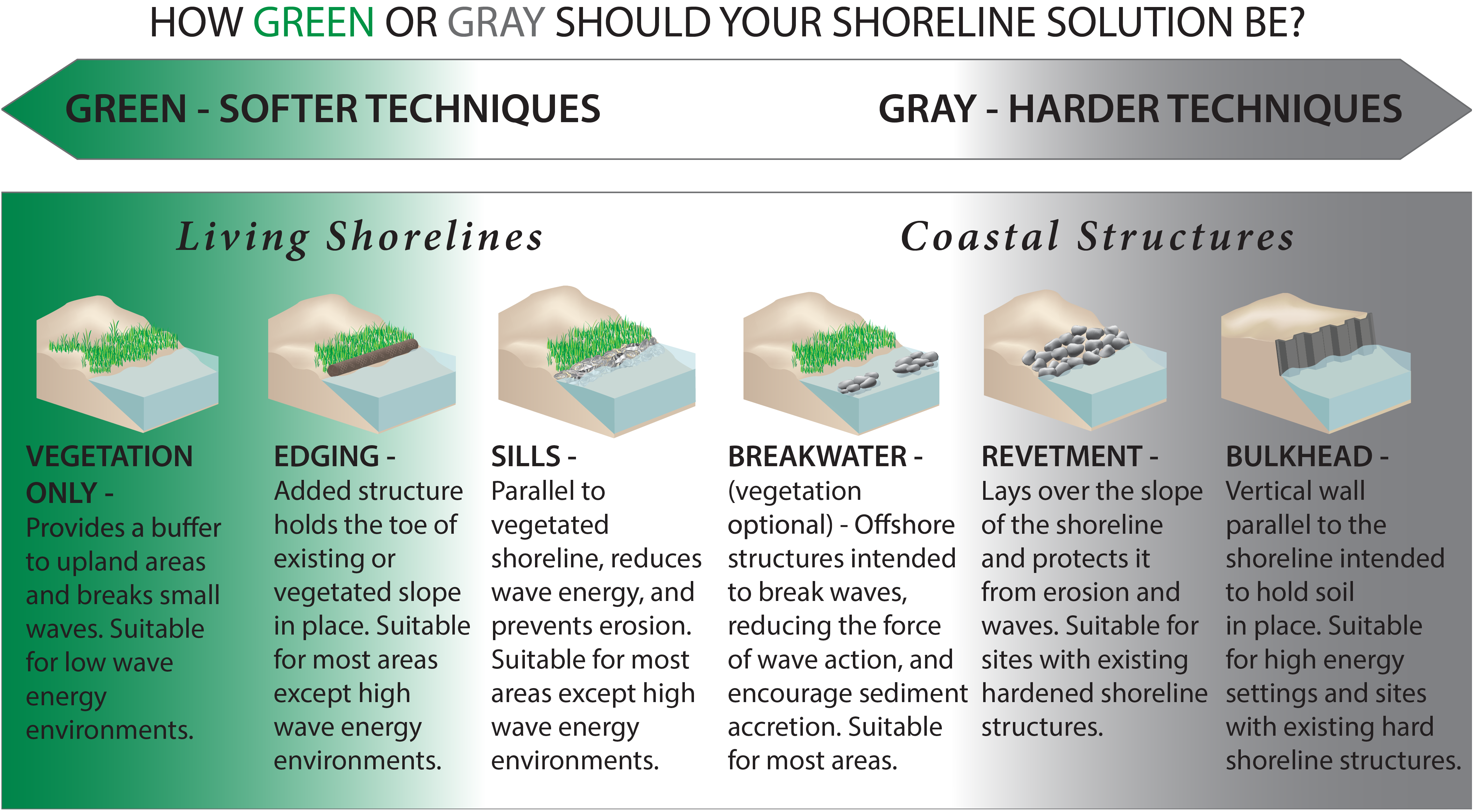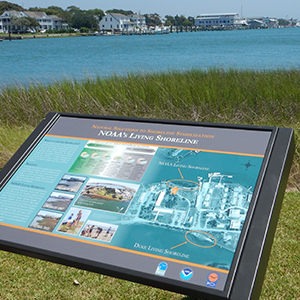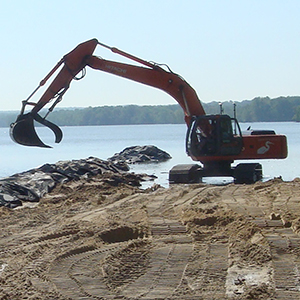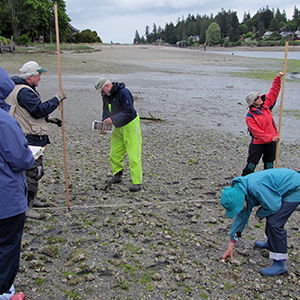Living Shorelines
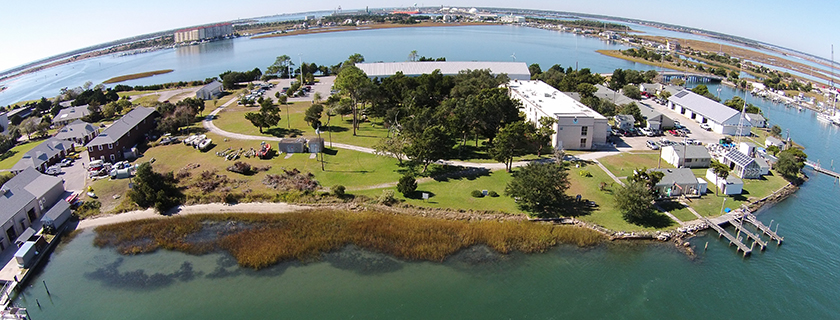
Coastal communities face constant challenges from shoreline erosion. Although erosion is a natural coastal process, many valuable resources border the nation’s coastline. Shorelines need protection from damage caused by intense storms, wave erosion, and sea-level rise. Shoreline stabilization does not need to create a barrier between land and water, as happens with hard shoreline stabilization structures like seawalls and bulkheads. New stabilization options, like living shorelines, are gaining attention as an alternative to traditional shoreline stabilization techniques. Living shorelines can reduce damage and erosion while simultaneously providing ecosystem services to society, including food production, nutrient and sediment removal, and water quality improvement.
What is a Living Shoreline?
- Living shoreline is a broad term that encompasses a range of shoreline stabilization techniques along estuaries, bays, tributaries, and other sheltered shorelines. Living shorelines are not typically used on beaches on the open ocean.
- A living shoreline has a footprint that is made up mostly of native material. It incorporates natural vegetation or other living, natural ‘soft elements alone or in combination with some type of harder shoreline structure, like oyster reefs, rock sills, or anchored large wood for added stability. Living shorelines connect the land and water to stabilize the shoreline, reduce erosion, and provide ecosystem services, like valuable habitat, that enhances coastal resilience.
NOAA encourages the use of living shorelines as a stabilization technique along sheltered coasts because they are effective barriers against erosion and provide habitat for coastal species. Shorelines having intact natural coastal habitats (like wetlands, dunes, mangroves, and coral reefs) experience less damage from severe storms and are more resilient than hardened shorelines. Areas with natural coastal habitat also have higher populations of fish and other living organisms important for shorebirds and for recreational and commercial purposes.
Podcast Hear what NOAA scientist Carolyn Currin has to say on NOAA Diving Deeper Podcast: Episode 65.
What are the common benefits of living shorelines?
- Protect shorelines from erosion
- Provide habitat for fish and other living resources
- Improve water quality and store nutrients
- Increase stability over time
- Can outperform hardened shorelines during a storm
- Attract natural wildlife
How do living shorelines compare to other shoreline stabilization techniques?
A natural shoreline stabilization solution needs to fit its environment. Projects on the left side of this continuum represent green, living shoreline techniques, and projects on the right represent gray, harder shorelines stabilization techniques.
What are NOAA’s guiding principles for living shorelines?
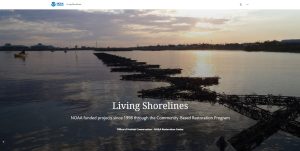
NOAA encourages the use of living shorelines as a shoreline stabilization technique along sheltered coasts. NOAA follows and encourages these Guiding Principles:
- Use living shorelines techniques that maintain or improve ecosystem function and enhance coastal resilience.
- Use shoreline protection methods that avoid or minimize channel-ward encroachment into a subtidal habitat.
- Use the softest approaches to shoreline stabilization feasible, based on site conditions.
- Carefully consider regional and site-specific differences (such as wave energy, habitat type, and geologic setting) in planning appropriate designs.
- Coordinate early with government and non-government partners to discuss site characteristics, history of erosion, and potential challenges for
proposed approaches. - Use the best available regional and local shoreline science and practices in a project’s siting, design, construction, evaluation, and adaptive management.
- Consider ecosystem services provided by a stabilization approach (such as erosion control and fish habitat) in the project design.
NOAA’s full Guiding Principles and additional guidance information can be found in NOAA’s Guidance for Considering the Use of Living Shorelines.
For more information about NOAA’s living shorelines work, please contact: Janine Harris.

